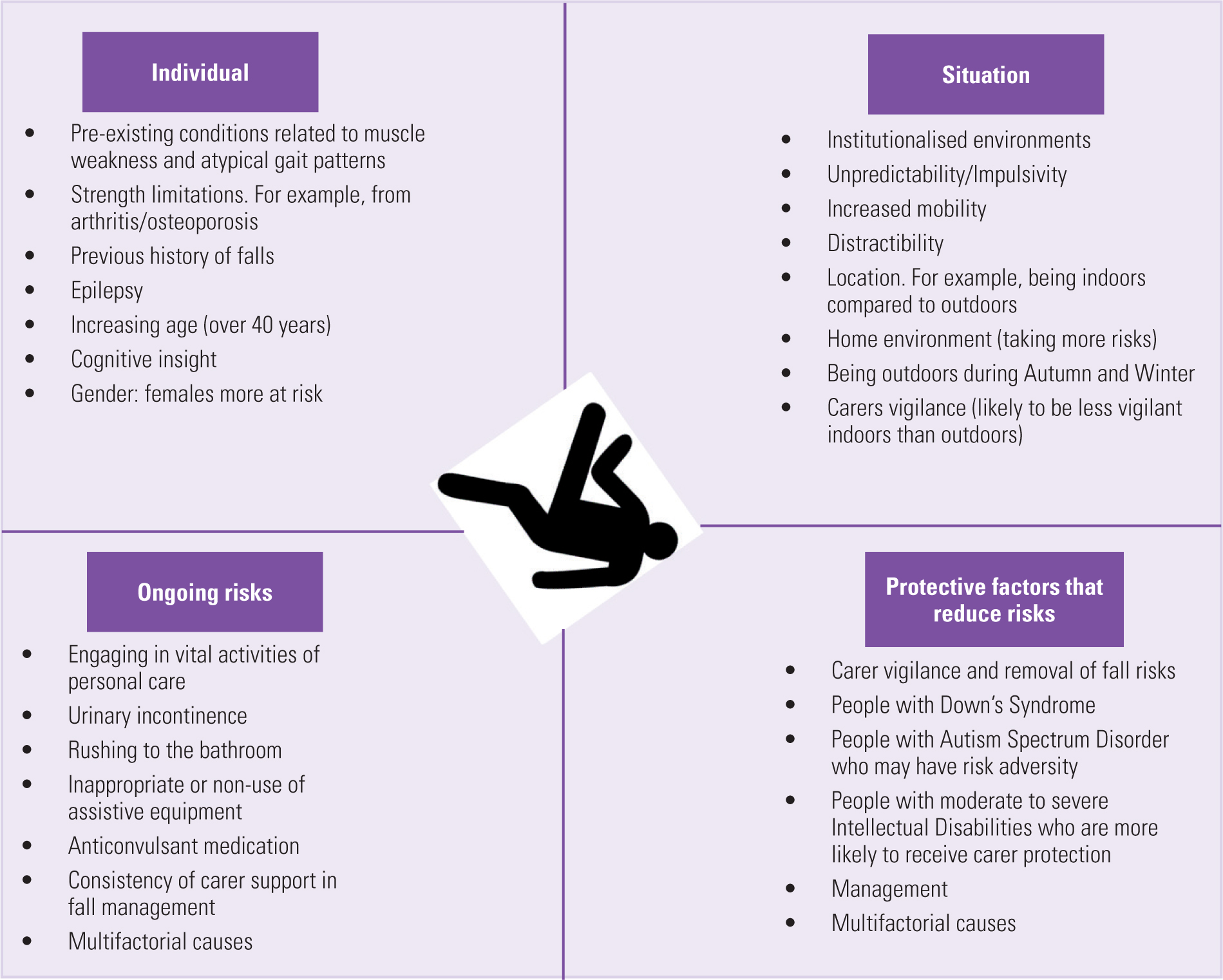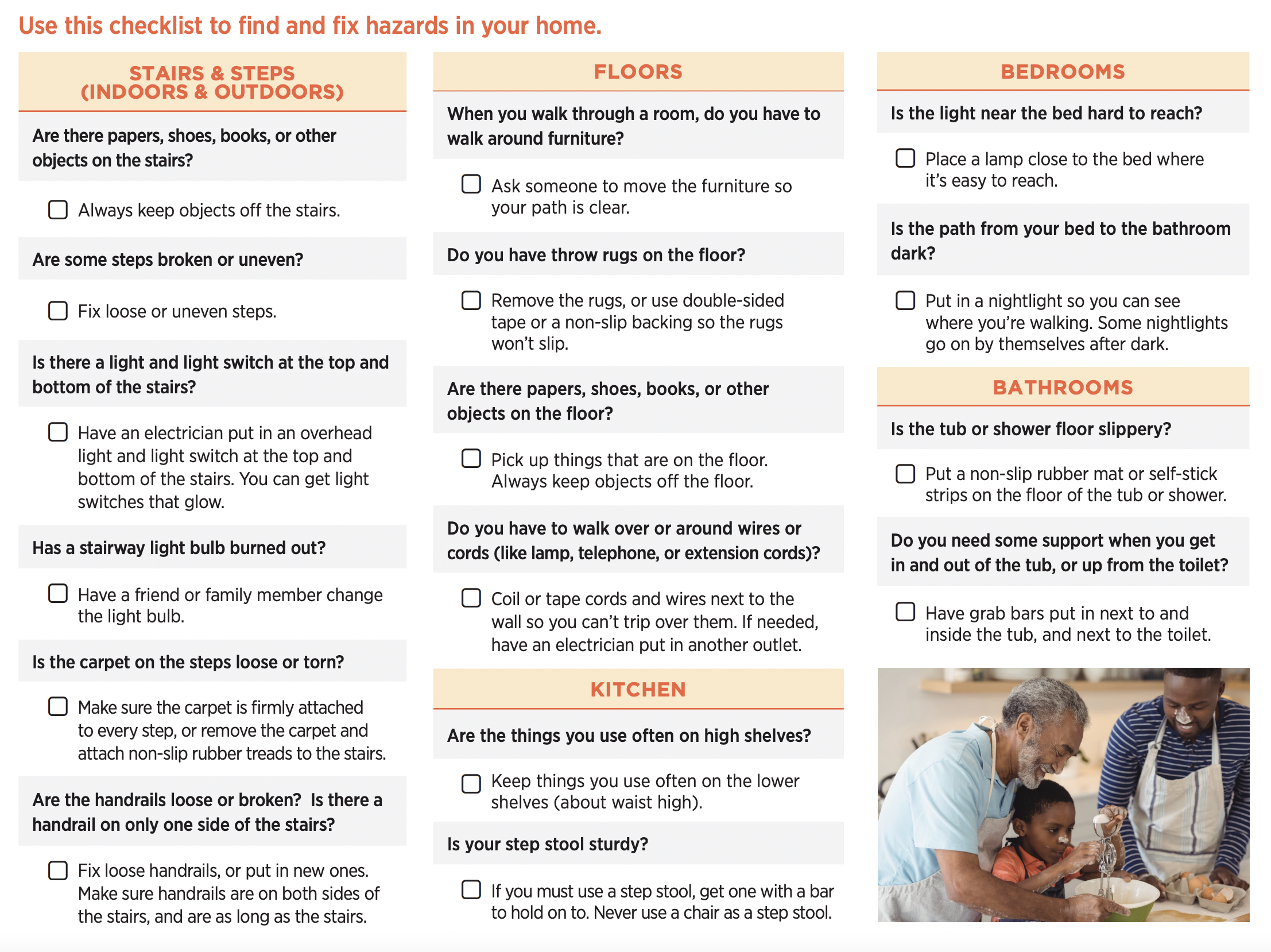How Dementia Fall Risk can Save You Time, Stress, and Money.
The Best Strategy To Use For Dementia Fall Risk
Table of Contents8 Easy Facts About Dementia Fall Risk ExplainedSome Known Details About Dementia Fall Risk Little Known Facts About Dementia Fall Risk.Dementia Fall Risk for Dummies
A fall threat evaluation checks to see how likely it is that you will fall. The assessment generally includes: This consists of a series of inquiries about your general health and if you've had previous falls or issues with balance, standing, and/or walking.STEADI consists of testing, evaluating, and treatment. Treatments are recommendations that might lower your threat of falling. STEADI includes 3 actions: you for your risk of falling for your risk elements that can be boosted to attempt to avoid drops (as an example, equilibrium issues, impaired vision) to minimize your threat of falling by making use of efficient methods (as an example, supplying education and sources), you may be asked several concerns including: Have you dropped in the previous year? Do you really feel unsteady when standing or strolling? Are you stressed over falling?, your supplier will evaluate your strength, balance, and gait, using the following autumn assessment devices: This test checks your stride.
If it takes you 12 seconds or more, it may imply you are at higher danger for a fall. This test checks strength and equilibrium.
Move one foot halfway forward, so the instep is touching the huge toe of your other foot. Move one foot fully in front of the various other, so the toes are touching the heel of your various other foot.
All About Dementia Fall Risk
The majority of falls happen as a result of multiple adding elements; consequently, taking care of the danger of dropping begins with identifying the aspects that contribute to fall risk - Dementia Fall Risk. Some of the most relevant threat aspects consist of: History of previous fallsChronic clinical conditionsAcute illnessImpaired stride and balance, lower extremity weaknessCognitive impairmentChanges in visionCertain high-risk medicines and polypharmacyEnvironmental aspects can additionally boost the danger for falls, consisting of: Inadequate lightingUneven or damaged flooringWet or unsafe floorsMissing or harmed handrails and grab barsDamaged or improperly fitted tools, such as beds, mobility devices, or walkersImproper use assistive devicesInadequate guidance of individuals staying in the NF, including those that display hostile behaviorsA effective fall threat management program requires a thorough professional assessment, with input from all participants of the interdisciplinary group

The treatment plan should additionally include treatments that are system-based, such as those that promote a secure atmosphere (suitable helpful hints lighting, hand rails, grab bars, and so on). The performance of the interventions need to be reviewed regularly, and the care plan revised as required to show modifications in the fall risk analysis. Carrying out an autumn risk administration system using evidence-based finest practice can lower the occurrence of drops in the NF, while restricting the potential for fall-related injuries.
Some Known Incorrect Statements About Dementia Fall Risk
The AGS/BGS standard recommends screening all grownups aged 65 years and older for loss risk yearly. This screening contains asking clients whether they have fallen 2 or even more times in the past year or looked for clinical attention for a fall, or, if they have not fallen, whether they feel unsteady when walking.
People that have actually dropped when without injury should have their balance and gait evaluated; those with gait or equilibrium problems ought to get additional assessment. A history of 1 loss without injury and without stride or equilibrium problems does not necessitate more analysis beyond continued yearly autumn threat testing. Dementia Fall Risk. A loss risk assessment is needed as part of the Welcome to Medicare examination

Some Known Incorrect Statements About Dementia Fall Risk
Recording a falls background is just one of the top quality indicators for loss prevention and monitoring. A critical part of threat assessment is a medicine testimonial. A number of classes of medications raise loss risk (Table 2). Psychoactive medicines in particular are independent forecasters of drops. These medicines have a tendency to be sedating, alter the sensorium, and harm balance and gait.
Postural hypotension can often be minimized by lowering the dose of blood my sources pressurelowering drugs and/or quiting drugs that have orthostatic hypotension as a side effect. Use above-the-knee support hose and copulating the head of the bed raised might also minimize postural decreases in high blood pressure. The recommended elements of a fall-focused health examination are revealed in Box 1.

A Pull time greater than or equivalent to 12 secs recommends high autumn danger. Being not able to stand up from a chair of knee height without making use of one's arms shows increased loss risk.